If you want to help The Dispatch and yourself, now’s your chance! Upgrade to Dispatch Premium. Loads of perks—ad-free podcasts, extra gift subscriptions, special invitations, etc.—are on offer. And take advantage of our Black Friday deal here.
Dear reader (other than those of you getting a little too existential),
Namaste. Here’s my past 48 hours.
Thursday morning India time (aka Wednesday night D.C. time), I woke up before dawn to go on an elephant-riding safari, in Kaziranga National Park in the state of Assam. We rode elephants at sunrise, as one does, and saw many one-horned Indian rhinos (political jokes were made about how I was in my natural habitat—RINOs, get it?—to which I responded, “Hey, I’m riding an elephant.”)
I guess you had to be there.
As a passionate elephantophile (yes, it’s a word), I was concerned that they might be abused. But other than having to carry my weight—plus the rounding error mass of Jamie Kirchick and our mahout—I saw no evidence of that. Indeed, when we returned later for a jeep safari, I saw our elephants lazily grazing unencumbered. Compared to circus elephants, it’s a pretty good life to do a little work in the morning and then be left free to your own devices for the rest of the day.
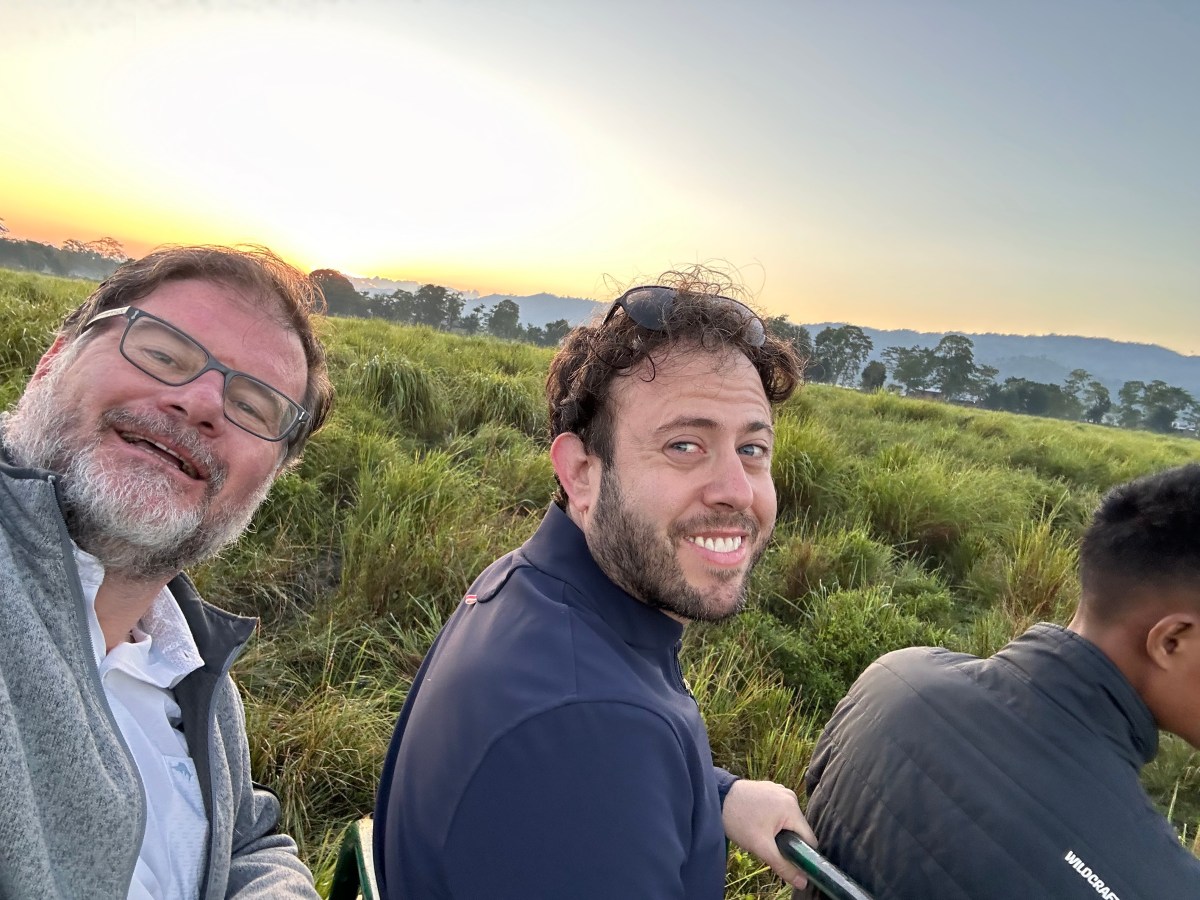
But I’m getting ahead of myself. After the elephant tour through tall grasslands that I am sure had many scary snakes lurking therein, we went back to the lodge, had breakfast, then turned around back to the park for a jeep tour. We didn’t see any tigers, but we did see a tiger pawprint and many more elephants, David Gergens rhinos, eagles, a water buffalo or two, and other critters. Back to the lodge once more, Rebeccah Heinrichs and I departed for the airport in Guwahati.
According to Google maps, it’s a five-and-half hour drive. The distance is only about 150 miles, but you have to account for traffic—traffic generated by congestion and construction but also by cows, goats, monkeys, humans, and oncoming vehicles whose drivers have a purely notional commitment to the rules of the road. I spend a lot of time insisting that politicians, celebrities, journalists, and businessmen “stay in their lane,” figuratively speaking. As important as I think that is to social health, it cannot hold a candle to the imperative of drivers staying in their lanes. I don’t mean people swerving in and out of the passing lane, I mean drivers swerving in and out of the opposing direction. We barreled headlong toward oncoming cars, trucks, buses, motorcycles, and scooters so often that I had to force myself to stop looking out the windshield. I didn’t have any gastrointestinal distress—aka “Delhi belly” on this trip—but daily driving alone is enough to arouse a strange new respect for the role of sphincter control.
We made it to the airport, checked in, and after having my carry-on bags rescanned by India’s version of TSA six times, Mrs. Heinrichs and I waited a few hours for our 3-hour flight to Delhi.
A word about Indian airport security. The Indians have a lot of experience with militants and terrorists (often a subtle distinction in that part of the world) doing bad things. And while I am sure there is some Israeli-style profiling going on, it was largely invisible to me because as one of the only white people in the packed airport I was oblivious to what that might entail. Regardless, the rules for what you can bring on a plane are much stricter in some ways and much looser in others. Yes, you have to take out your computer and other large electronics. But you also have to remove every charger, charging cord, and pretty much every metal object, including coins and metallic pens. Many prohibited items are familiar—fireworks, including “poppers” and the like, toy guns, etc. But you also can’t have matches, cigar cutters, any form of lighter, etc. I learned this the hard way.
You also cannot, under any circumstances, travel with coconuts, dried or whole. I learned from Googling that at Mumbai’s airport, 9 percent of confiscated items are coconuts.
You can learn a lot about a place while stuck at an airport checkpoint waiting to get your stuff. You can travel with all manner of liquids and foodstuffs (though, again, don’t even think about bringing coconuts). Loose jars of chutney or sauce were fine. I watched bags get emptied of stuff that I couldn’t remotely identify. One fellow had a plastic grocery bag full of what might have been some kind of grey raw dough, wet sand, or—to my untrained eye—plastic explosives, but don’t you dare try to bring a pack of matches.
Anyway, at Delhi—where I sailed through security with only one rescan of my stuff—we had a 4-hour layover. And then, we had a mere 15-hour flight home on Air India. The crew was typically professional and nice, but not wanting to sound ungracious, I will just say that Air India is not my favorite airline.
In short—so to speak—my total travel time since I last got out of bed was about 48 hours, give or take.
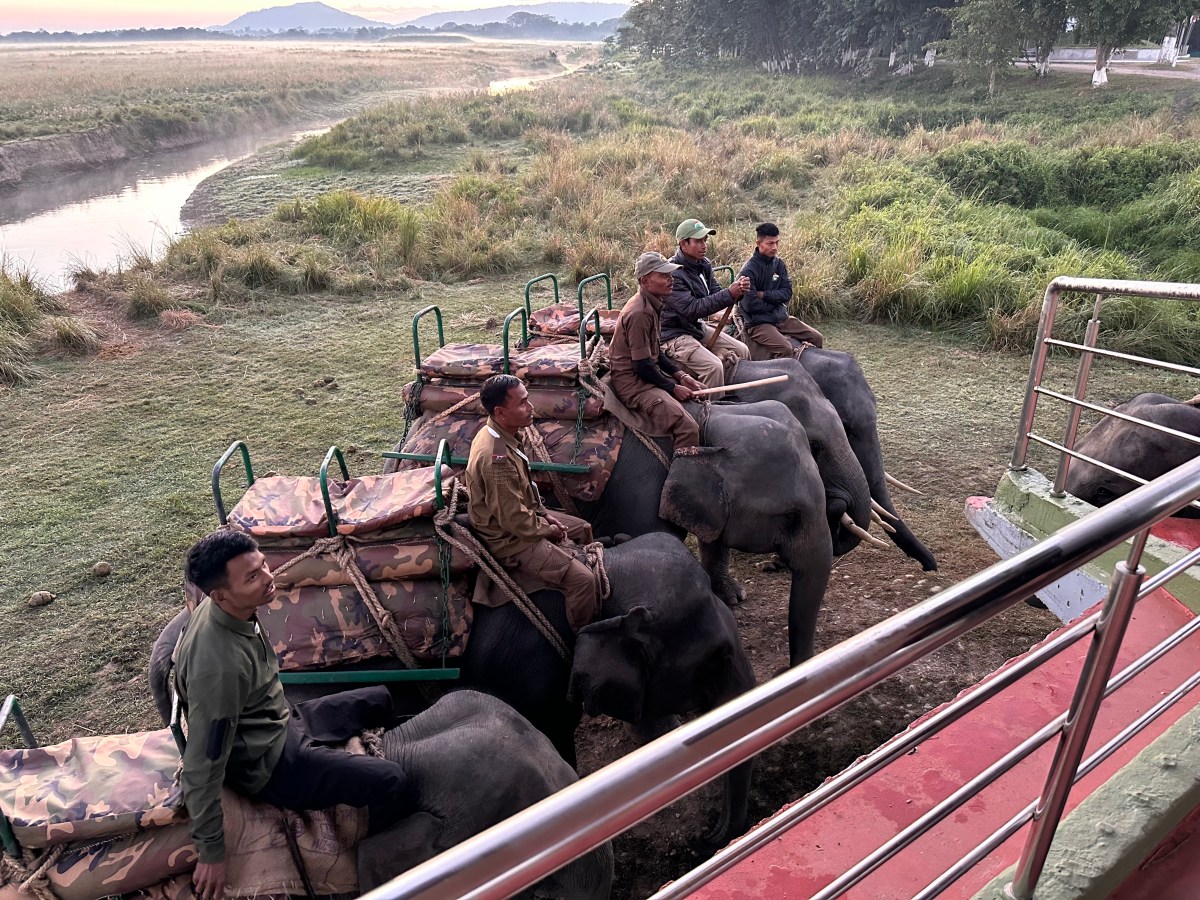
The global Rorschach test.
I bring this up as a way to preemptively defend myself against criticisms of this “news”letter as insufficiently intellectually substantive. I’m in a bit of a dream state right now. But I feel very guilty about missing a couple G-Files and Remnants while I was gone, and I feel honor-bound to get back into rotation.
I also feel guilty about this because this was an incredibly intellectually rich and rewarding trip. I learned a great deal about a lot of things, and not just about India. (My fellow junketeers, starting with the brilliant and shocking indefatigable Walter Russell Mead who organized the trip, had all sorts of fascinating insights and opinions about a vast range of things). But I don’t have the neurons to do any of that justice right now. I’m not sure I ever will.
(Oh, lest I forget the full disclosure: The trip was hosted and sponsored by the India Foundation in cooperation with the Hudson Institute, where Walter is the Ravenel Curry (no pun intended) Distinguished Fellow in Strategy and Statesmanship.)
Indeed, I’m not even sure I understand India better now that I visited it. I know many things I didn’t know before, but what I really know is how little I know about India. It is one of the oldest civilizations on earth, but its intellectual and religious touchstones are so different than those of the West, it’s incredibly humbling.
And while I do not feel physically refreshed, the experience was nonetheless deeply refreshing in that it served to shake my intellectual Etch A Sketch. I will definitely be writing more on this stuff down the road.
But I think one point is worth dwelling on as a down payment.
Anyone with moderate knowledge of much more kindred nations—the U.K., France, Canada, Mexico, and especially Israel—is familiar with the way American journalists and intellectuals try to impose our constructs and assumptions on other countries. It’s not hard to find commentary that tries to see British, Canadian, or Israeli politics as an extension of our “red vs. blue” squabbles. And because our societies are so similar, such analysis sometimes has merit. But, again, if you know anything about those countries, you also know that such comparisons can mislead you in myriad ways.
For instance, Ta-Nehisi Coates visited Israel for a hot minute and convinced himself he was looking at “white supremacy” and Jim Crow. Whatever you think about the Israel-Palestinian issue, if you see Kosher Bull Connorism on display it says vastly more about you than about Israel.
But India is vastly more of an ink-blot test for Western observers than Israel can ever be. Because the political, philosophical, cultural, and theological language that serve as the granite foundation of our thinking at least draws upon Western categories. Save for the role of the British—which is hardly minimal—India cannot be found anywhere in the shaded part of the Athens and Jerusalem Venn diagram.
I think that makes India’s commitment to democracy and liberalism vastly more interesting, impressive, and intellectually provocative.
Still, there are some interesting commonalities. For starters, conservatives in India—at least the ones I spoke to—see a threat from “wokism.” For all the talk about how wokism hurt Democrats in this election, there hasn’t been enough talk about how it hurts America on the world stage. An American Indian expert explained to me that the Indian left—heavily educated in the West—has imbibed a lot of this stuff. The Indian left is more concerned with the availability of gender-neutral toilets, he explained, while the Indian right is more focused on the availability of toilets. As a matter of public health and good governance alone, Prime Minister Narendra Modi’s push for “toilets before temples” is indisputably the better position.
But if you think about it for a moment, you can see how this cuts both ways for American observers. You can see how the right would celebrate the rejection of wokism as a sign of philosophical solidarity. Fair enough. But Modi’s emphasis on technocratic, progressive, public health concerns would until very recently—I mean like until this year with the MAHA stuff—be coded as center-left ambition.
A better example of (a possibly misleading) commonality is populism.
The global financial crisis and the pandemic ignited populist upheavals everywhere. But populism, like nationalism, is inherently rooted in the soil from which it emerges—by which I mean it can only take fundamentally indigenous forms.
This can be misleading because humans, pattern-recognizing bipeds that we are, have a sweet tooth for confirmation of our worldviews. Indeed, the term “worldview” itself is apt. Many populist nationalists in America look at the upheavals elsewhere and assume that it’s the same cause everywhere. So, the trucker’s revolt in Canada, Brexit in the U.K., and the yellow vest protests in France are pigeonholed into an American context. That’s not entirely wrong, but it is simplistic. Even more simplistic: thinking that the rise of Hindu nationalism is particularly comparable to the rise of American nationalism.
Think of it this way. A host of right-wing intellectuals look at Victor Orban’s Hungary the way American leftists used to look at places like Cuba or Sweden as lodestars for what we should be doing in America. This isn’t always stupid in every regard but, again, it is always simplistic. Even if you believe the ideologues’ rosiest versions of Cuba, Sweden, or Hungary—which are always caricatures to some extent—the idea that you can organize and govern America the same way is simply preposterous.
The tendency to see what you want to see in other cultures has long been a staple of highbrow leftwing anti-Americanism and anti-Westernism. And that critique has merit for the reasons I teased above. Edward Said made some valid points in his book Orientalism (and Bernard Lewis offered some searingly persuasive criticisms of Said’s exaggerations).
But the core problem with the leftwing critiques of Western “occidentalism” is that Said et al. framed their criticisms as an exclusively and perniciously Western phenomenon, when confirmation bias and philosophical solipsism is a universal human tendency. Sure, Westerners are often guilty of “mirroring” in foreign policy, meaning that we tend to assume that other states share the same objectives and values that we do. Indeed, foreign policy “realism” is often an elaborate exercise in mirroring. It assumes that Russia, Iran, North Korea, China, Canada, the United States, Switzerland, and Belize all seek the same things in foreign policy. If you watch even 10 minutes of those nighttime Russian talk shows, you’ll quickly discover that they think America is no different than Russia in its imperialistic ambitions.
Our conversations with politicians and intellectuals were bound by Chatham House rules, so I cannot identify any participants or attribute any quotes to them. But I was struck by how many Indian intellectuals and politicians were as guilty of these kinds of mistakes as Westerners. I readily concede that their understanding of America was better than our understanding of India. Because America is the foremost military, economic, and cultural power Indians, Israelis, Canadians and pretty much everyone else follow American politics, of necessity, much more closely than we follow any of theirs.
But I was still struck by how many self-described conservative Indian intellectuals simply assumed that American “national conservatism” was synonymous with American conservatism. They believed, to one extent or another, that “NatCons” had routed every other faction of conservatives and that so-called “national conservatism” and even Orban-philia are a Rosetta stone for understanding Donald Trump and the Republican Party. When I explained that the meaning and policy agenda of national conservatism is contested and controversial even among NatCons—never mind among conservatives generally—it seemed to be a disappointing surprise. This is not to say that understanding American populist-nationalist conservatism is a bad idea for Indian policymakers. But, suffice it to say that what holds true for American political analysts holds just as true for Indian ones: If you think that Donald Trump will be an intellectually and politically consistent ideologue, you’re in for some surprises.
Anyway, I’m writing on fumes now. I have more thoughts on the latest Remnant, including my now very strong views on yak products. When we were in Tawang, near the Chinese border, we were treated graciously and generously by our thoroughly charming hosts. This generosity included generous servings of yak butter, yak cheese, yak meat, and even yak hide haberdashery. But one of the things I’ve learned from this heady week of yakking about politics and geopolitics is that I am not partial to yak. Indeed, my new rule of thumb is to avoid yak lest I yack.
Various & Sundry
Canine Update: I missed my beasts even more than you’d think because even though I knew I’d see many stray dogs on this trip, I was emotionally unprepared for it. Most of the dogs we saw didn’t look too unhealthy. The ones in the Himalayas tended to be much fluffier than those in Delhi and Assam, and they generally looked happier and healthier than the ubiquitous cows. But it still pulled at my dog-loving heart something awful. If she’d been born there, Zoë could have been a kind of Indian warlord, but I suspect poor Pippa would make a beeline for the British embassy and beg for asylum at the first sight of a monkey. (There are lots of monkeys in India. One of my colleagues saw a monkey inside the foreign ministry. In Tawang, our tour of a museum was poorly lit because a monkey got electrocuted in a transformer and shorted the lights.) I shudder to think what Gracie would make of any of it. I know that if TFJ had been with me, she would have spent most of her time either feeding the dogs or trying to figure out how to bring them home.
Anyway, the girls are good and were happy to see me. While I was gone, the animals followed the Fair Jessica like a Secret Service detail. Kristen got some excellent album cover pics of them as well.
The Dispawtch
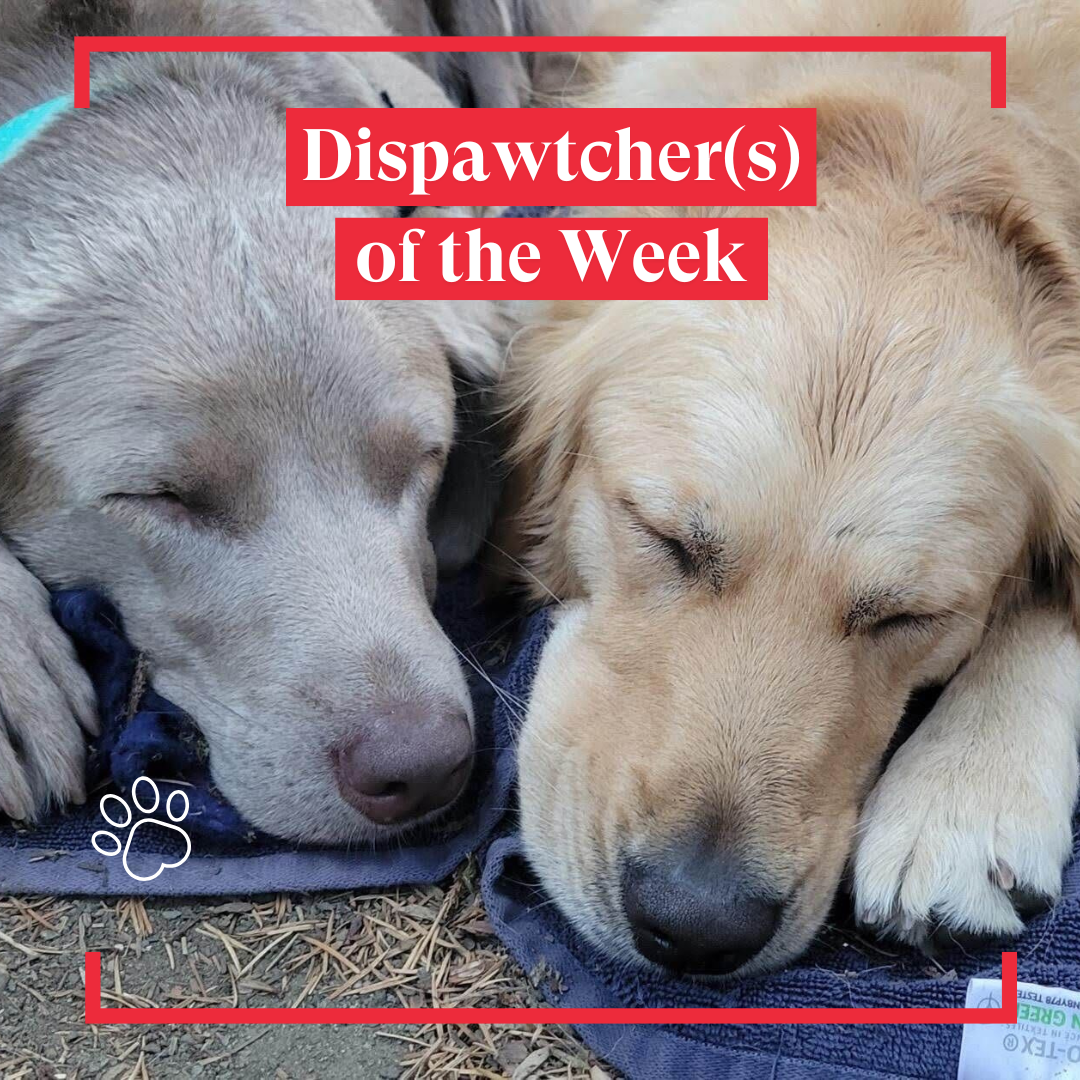
Owner’s Name: JD Fisher
Why I’m a Dispatch Member: I’ve been following The Dispatch since Jonah left National Review. I want to support solid, independent journalism, and The Dispatch provides such rich content, both news and opinion, that it’s a no-brainer. I respect the staff and the content.
Personal Details: My wife and I are in the early stages of adopting two wonderful boys after a 7-plus-year foster care journey.
Pet’s Name: Posey and Madi (named for Buster Posey and Madison Bumgarner, the battery for the 2014 World Champion San Francisco Giants).
Pet’s Breed: Sliver lab (Posey) and golden retriever (Madi)
Pet’s Age: 6 (Posey) and 3 (Madi)
Gotcha Story: My previous dog, Mollie, was a literal godsend. She got me through some very difficult times, including financial calamity, divorce, and joblessness. Unfortunately at age 9, Mollie came down with lymphoma and had to be laid to rest six months later. My wife and I agreed to take some time to grieve before getting a new dog.
Then my co-worker, who breeds silver labs, ended up with an accidental litter after her female got knocked up by her buddy’s black lab on a hunting trip. Whoops. Needless to say, she needed homes for the pups. I talked my wife into visiting them, and that was that. Welcome to the family, Posey! The funny thing is, my wife was worried that we picked “the chubby one” because she was quite the porker as a puppy. But she was the smallest of the litter, only about 50 pounds.
A few years later, during COVID, Madi came around. As a seasoned teacher with a decade of middle school under her belt, my wife started a distance learning support business. One of her clients bought a COVID puppy ... a $2,500 golden retriever. Problem was, they had an older rescue dog that did not jive well with the puppy. She started asking around for someone to take the puppy off their hands. So when my wife came home one day with the story, I said “OF COURSE WE’LL TAKE HER!” And so Madi came to visit (she was only about 10 weeks old, named Winnie at the time), and she and Posey played and that was that. Welcome to the family, Madi!
Pet’s Likes: Posey is the definition of a water dog. If there is a puddle, she will find it and slosh around in it. I take both dogs to my local middle school every morning for fetch and the field next to the track is about 1 foot lower. In the rainy season—in southwest Washington we have two seasons: summer and rain—a ginormous puddle forms between the track and the open field spanning about three yards wide and 50 yards long. She will fetch a couple of times, then run headlong into the puddle and slosh about. When we go camping or hiking we have to cut her off or else she will swim until she collapses. We even bought her her own kiddie pool to put in the backyard during the summer.
Madi loves to bring us gifts. It’s the strangest thing. She won’t fetch (she prefers to explore and pester Posey), but she will bring us gifts of all kinds. Shoes, jammies, our boys’ stuffies, the slippers I keep in my office, jackets—anything she can get her paws on, literally. If we don’t close our bedroom door at night, she will go on midnight patrols and we’ll wake up with a bed full of clothes, shoes, and stuffies. Whenever we come home, never are we greeted by an empty-mouthed Madi.
Pet’s Dislikes: Posey abhors getting her nails trimmed. She will hide in the corner, curl into a ball, and shiver at the mere sight of the clippers. She’s a good, patient girl though, and she lets me trim her nails but will only accept her reward (training treats) if I set them down next to her.
Madi doesn’t like being alone. I think COVID ruined any hope of her having an independent streak. She will sit on the back of the couch like a cat waiting for us to come home. She will follow us around nonstop throughout the house during the day. She’s just gotta be part of whatever is going on. Major FOMO.
Pet’s Proudest Moment: A family friend has a daughter who is terribly afraid of dogs. They came over one day, and the daughter wouldn’t even come in the house at first. Eventually, she came in. Pretty soon, she was cuddled up on the couch with one dog on each side of her. They won her over. I was so glad my dogs could provide such peace and joy to this scared little girl.
Moment Someone (Wrongly) Said Pet Was a Bad Dog: We lead our high school ministry at our church, and we had a student who trained dogs for show. Her dogs were better behaved than ours ... and she let us know. But I love having my dogs on the couch next to us while we watch the game or a movie. So I’m ok with it.
Do you have a quadruped you’d like to nominate for Dispawtcher of the Week and catapult to stardom? Let us know about your pet by clicking here. Reminder: You must be a Dispatch member to participate.


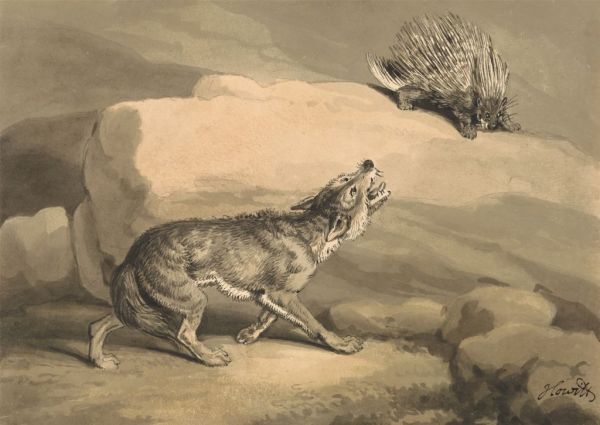

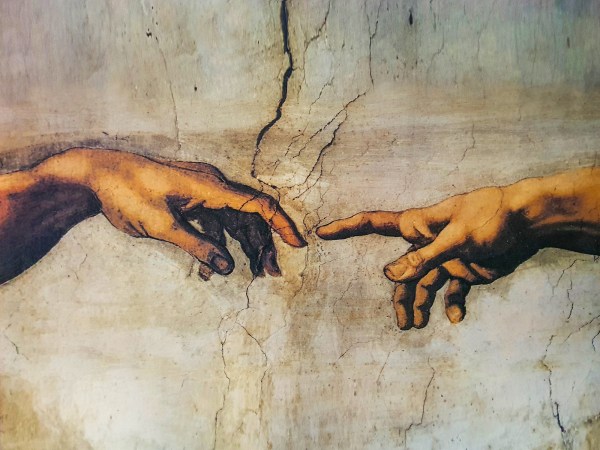

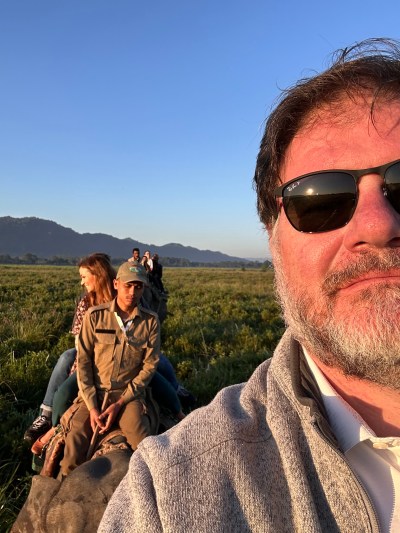
Please note that we at The Dispatch hold ourselves, our work, and our commenters to a higher standard than other places on the internet. We welcome comments that foster genuine debate or discussion—including comments critical of us or our work—but responses that include ad hominem attacks on fellow Dispatch members or are intended to stoke fear and anger may be moderated.
With your membership, you only have the ability to comment on The Morning Dispatch articles. Consider upgrading to join the conversation everywhere.